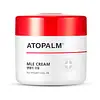What's inside
What's inside
 Key Ingredients
Key Ingredients

 Benefits
Benefits

 Concerns
Concerns

No concerns
 Ingredients Side-by-side
Ingredients Side-by-side

Water
Skin ConditioningSqualane
EmollientGlycerin
Humectant1,2-Hexanediol
Skin ConditioningBetaine
HumectantPanthenol
Skin ConditioningSodium Hyaluronate
HumectantHydrolyzed Collagen
EmollientHydroxypropyltrimonium Hyaluronate
Hydrolyzed Hyaluronic Acid
HumectantSodium Acetylated Hyaluronate
HumectantAcetyl Hexapeptide-8
HumectantAdenosine
Skin ConditioningHyaluronic Acid
HumectantHydrolyzed Sodium Hyaluronate
Skin ConditioningSodium Hyaluronate Crosspolymer
HumectantPotassium Hyaluronate
Skin ConditioningAcrylates/C10-30 Alkyl Acrylate Crosspolymer
Emulsion StabilisingArginine
MaskingAllantoin
Skin ConditioningXylitylglucoside
HumectantAnhydroxylitol
HumectantXylitol
HumectantGlucose
HumectantButylene Glycol
HumectantAmmonium Acryloyldimethyltaurate/Vp Copolymer
Caprylyl Glycol
EmollientWater, Squalane, Glycerin, 1,2-Hexanediol, Betaine, Panthenol, Sodium Hyaluronate, Hydrolyzed Collagen, Hydroxypropyltrimonium Hyaluronate, Hydrolyzed Hyaluronic Acid, Sodium Acetylated Hyaluronate, Acetyl Hexapeptide-8, Adenosine, Hyaluronic Acid, Hydrolyzed Sodium Hyaluronate, Sodium Hyaluronate Crosspolymer, Potassium Hyaluronate, Acrylates/C10-30 Alkyl Acrylate Crosspolymer, Arginine, Allantoin, Xylitylglucoside, Anhydroxylitol, Xylitol, Glucose, Butylene Glycol, Ammonium Acryloyldimethyltaurate/Vp Copolymer, Caprylyl Glycol
Water
Skin ConditioningGlycerin
HumectantPropanediol
SolventMyristoyl/Palmitoyl Oxostearamide/Arachamide Mea
Skin ConditioningCaprylic/Capric Triglyceride
MaskingCetearyl Ethylhexanoate
EmollientCetearyl Alcohol
EmollientPolyglyceryl-10 Distearate
EmulsifyingGlyceryl Stearate
EmollientHydrogenated Vegetable Oil
EmollientOlea Europaea Fruit Oil
MaskingHelianthus Annuus Seed Oil
EmollientCamellia Sinensis Seed Oil
HumectantSimmondsia Chinensis Seed Oil
EmollientVitis Vinifera Seed Oil
EmollientCarthamus Tinctorius Seed Oil
MaskingSunflower Oil Decyl Esters
Skin ConditioningPortulaca Oleracea Extract
Skin ConditioningViscum Album Fruit Extract
SoothingSorbitan Stearate
EmulsifyingBeta-Glucan
Skin ConditioningTocopherol
AntioxidantPhytosterols
Skin ConditioningCarbomer
Emulsion StabilisingAllantoin
Skin ConditioningStearic Acid
CleansingArginine
MaskingSodium Phytate
Sodium Hyaluronate
HumectantAnthemis Nobilis Flower Oil
MaskingSalvia Officinalis Oil
MaskingSantalum Album Oil
Masking1,2-Hexanediol
Skin ConditioningCaprylyl Glycol
EmollientWater, Glycerin, Propanediol, Myristoyl/Palmitoyl Oxostearamide/Arachamide Mea, Caprylic/Capric Triglyceride, Cetearyl Ethylhexanoate, Cetearyl Alcohol, Polyglyceryl-10 Distearate, Glyceryl Stearate, Hydrogenated Vegetable Oil, Olea Europaea Fruit Oil, Helianthus Annuus Seed Oil, Camellia Sinensis Seed Oil, Simmondsia Chinensis Seed Oil, Vitis Vinifera Seed Oil, Carthamus Tinctorius Seed Oil, Sunflower Oil Decyl Esters, Portulaca Oleracea Extract, Viscum Album Fruit Extract, Sorbitan Stearate, Beta-Glucan, Tocopherol, Phytosterols, Carbomer, Allantoin, Stearic Acid, Arginine, Sodium Phytate, Sodium Hyaluronate, Anthemis Nobilis Flower Oil, Salvia Officinalis Oil, Santalum Album Oil, 1,2-Hexanediol, Caprylyl Glycol
 Reviews
Reviews

Ingredients Explained
These ingredients are found in both products.
Ingredients higher up in an ingredient list are typically present in a larger amount.
1,2-Hexanediol is a synthetic liquid and another multi-functional powerhouse.
It is a:
- Humectant, drawing moisture into the skin
- Emollient, helping to soften skin
- Solvent, dispersing and stabilizing formulas
- Preservative booster, enhancing the antimicrobial activity of other preservatives
Allantoin is a soothing ingredient known for its protective and moisturizingg properties. Because of this, it is often added to products with strong active ingredients.
Studies show higher concentrations of this ingredient can promote wound healing.
Though it can be derived from the comfrey plant, allantoin is produced synthetically for cosmetic products to ensure purity.
Learn more about AllantoinArginine is an amino acid that is important for human development. Your body uses is it to produce hair keratin and skin collagen.
As a cosmetic ingredient, Arginine has antioxidant properties and can also help repair damaged skin. This ingredient is derived either synthetically or from animals.
Arginine isn't fungal acne safe when used in the presence of other lipids (fats, fatty acids, oils, esters, etc). Oils and fats occur naturally within the skin, so take caution when using Arginine if you're prone to fungal acne.
Learn more about ArginineCaprylyl Glycol is a humectant and emollient, meaning it attracts and preserves moisture.
It is a common ingredient in many products, especially those designed to hydrate skin. The primary benefits are retaining moisture, skin softening, and promoting a healthy skin barrier.
Though Caprylyl Glycol is an alcohol derived from fatty acids, it is not the kind that can dry out skin.
This ingredient is also used as a preservative to extend the life of products. It has slight antimicrobial properties.
Learn more about Caprylyl GlycolGlycerin is already naturally found in your skin. It helps moisturize and protect your skin.
A study from 2016 found glycerin to be more effective as a humectant than AHAs and hyaluronic acid.
As a humectant, it helps the skin stay hydrated by pulling moisture to your skin. The low molecular weight of glycerin allows it to pull moisture into the deeper layers of your skin.
Hydrated skin improves your skin barrier; Your skin barrier helps protect against irritants and bacteria.
Glycerin has also been found to have antimicrobial and antiviral properties. Due to these properties, glycerin is often used in wound and burn treatments.
In cosmetics, glycerin is usually derived from plants such as soybean or palm. However, it can also be sourced from animals, such as tallow or animal fat.
This ingredient is organic, colorless, odorless, and non-toxic.
Glycerin is the name for this ingredient in American English. British English uses Glycerol/Glycerine.
Learn more about GlycerinSodium Hyaluronate is hyaluronic acid's salt form. It is commonly derived from the sodium salt of hyaluronic acid.
Like hyaluronic acid, it is great at holding water and acts as a humectant. This makes it a great skin hydrating ingredient.
Sodium Hyaluronate is naturally occurring in our bodies and is mostly found in eye fluid and joints.
These are some other common types of Hyaluronic Acid:
Learn more about Sodium HyaluronateWater. It's the most common cosmetic ingredient of all. You'll usually see it at the top of ingredient lists, meaning that it makes up the largest part of the product.
So why is it so popular? Water most often acts as a solvent - this means that it helps dissolve other ingredients into the formulation.
You'll also recognize water as that liquid we all need to stay alive. If you see this, drink a glass of water. Stay hydrated!
Learn more about Water